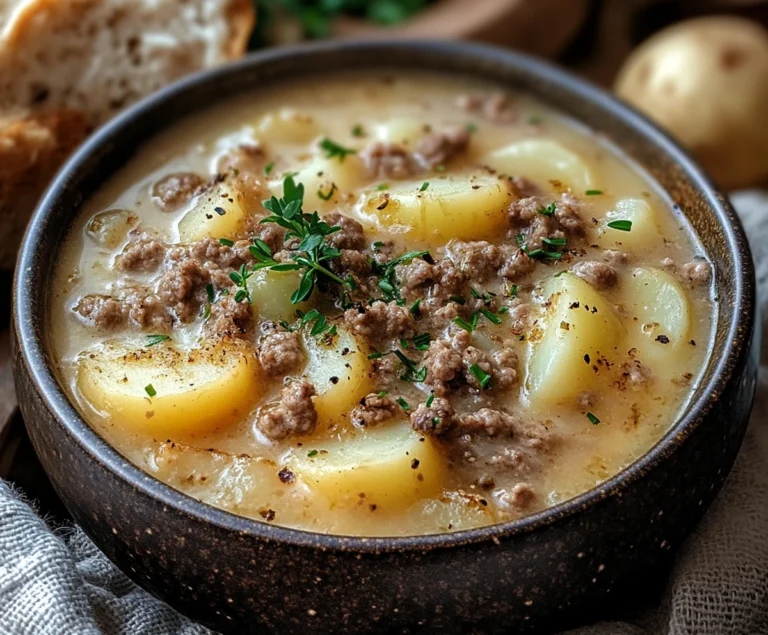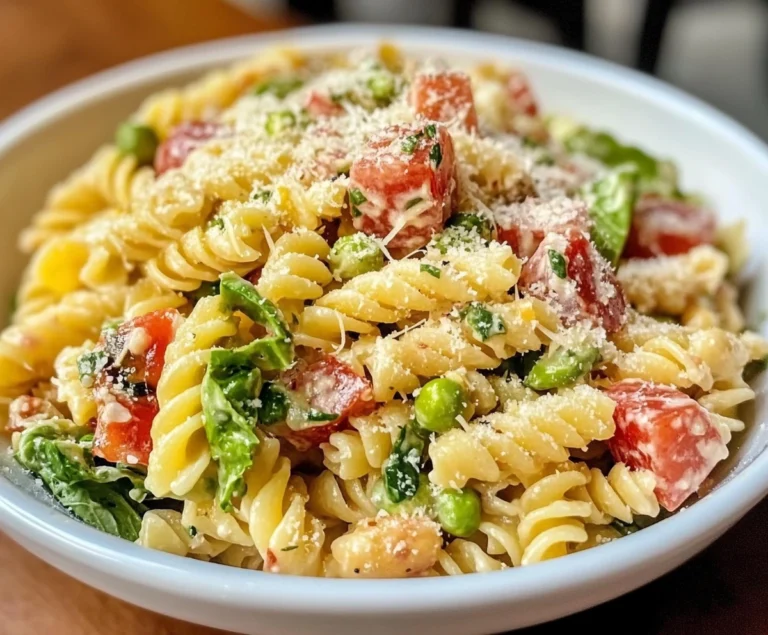What not to do when making biscuits
Biscuits are a staple in many households, known for their light, fluffy texture and buttery goodness. Whether served for breakfast, as a side, or in a comforting meal, a perfectly baked biscuit can elevate any dish. However, getting those perfect biscuits isn’t always easy. Many home bakers struggle with dense, flat, or dry biscuits, and it often comes down to simple, avoidable mistakes.
In this comprehensive guide, we’ll cover the common mistakes and what not to do when making biscuits. You’ll learn why certain steps are crucial and how to troubleshoot biscuit problems for better results. Let’s dive deep into the science and art of biscuit making, ensuring that you achieve biscuit perfection every time.
1. Using the Wrong Flour
The type of flour you use can make or break your biscuits. Flour comes in different varieties, each with different gluten content, which affects the texture of the final product. Using all-purpose flour is the standard for biscuit-making, but what many bakers don’t realize is that some flours can drastically alter the outcome.
Why Gluten Matters in Biscuits
Gluten is a protein found in wheat that gives dough its elasticity and structure. While high-gluten flour, like bread flour, is perfect for yeast breads, it’s disastrous for biscuits. The goal with biscuits is to create a tender, flaky texture, and high gluten content can lead to tough, chewy biscuits. On the other hand, cake flour, which is low in gluten, can result in biscuits that are too soft and don’t hold their shape.
For this reason, many expert bakers recommend using self-rising flour. Self-rising flour contains just the right amount of gluten for biscuit-making, along with added leavening agents (baking powder and salt), which help the biscuits rise. This flour simplifies the process, ensuring that you don’t forget to add these critical components.
What Happens When You Use the Wrong Flour?
- Using bread flour will result in overly chewy, dense biscuits because of the high gluten content.
- Using cake flour can cause the biscuits to fall apart or be too soft, lacking the structure needed to rise properly.
- If you accidentally use whole wheat flour, the biscuits might be dense and dry due to the bran in the flour interfering with the rise.
How to Choose the Right Flour
For light, flaky biscuits:
- Stick with all-purpose flour or self-rising flour. Self-rising flour simplifies the process, as it contains the correct balance of leavening agents.
- If using all-purpose flour, add baking powder and salt to ensure proper rise.
- Avoid high-gluten flours unless you’re experimenting with texture, like a whole grain biscuit that is intentionally denser.
If you’re experimenting with different types of flours for dietary needs, you can check out recipes for almond flour-based cupcakes in this detailed guide.
2. Not Keeping Ingredients Cold
One of the most crucial aspects of biscuit making is ensuring that your fats—whether it’s butter, shortening, or lard—stay cold during the mixing process. If the butter melts too soon, you lose the opportunity to create the signature flaky layers biscuits are known for.
Why Cold Ingredients Matter
Cold ingredients are key to creating those tender layers. When cold butter is incorporated into the flour mixture and exposed to heat in the oven, it melts and produces steam, which separates the dough into layers. If the butter or fat is too warm when you’re mixing the dough, it will melt prematurely, resulting in a dense, greasy texture.
Here’s why this happens:
- Cold Butter = Flakiness: Cold butter creates pockets of steam when it melts in the oven, leading to a light, layered structure.
- Warm Butter = Greasiness: When butter melts too soon, it saturates the dough rather than helping it rise.
How to Keep Ingredients Cold
There are several strategies you can use to keep your ingredients cold:
- Chill Your Butter or Fats: Use butter straight from the fridge, or even freeze it before cutting it into the flour.
- Pre-Chill the Mixing Bowl: Put your bowl and utensils in the fridge or freezer for 10 minutes before you start.
- Work Quickly: The less time you spend handling the dough, the better. The warmth from your hands can melt the butter if you overwork it.
- Chill the Dough: After mixing your dough, refrigerate it for about 15 minutes before rolling it out and cutting the biscuits. This ensures that the fat stays firm before it hits the oven.
For other baked goods that emphasize the importance of cold ingredients, check out this recipe for prune cupcakes where cold butter is essential.
3. Overmixing the Dough
Mixing biscuit dough is a delicate process. Overmixing is one of the most common mistakes that leads to tough, dense biscuits. This occurs because overmixing develops the gluten in the flour, making the dough too structured and causing the biscuits to lose their tenderness.
Understanding the Role of Gluten in Dough
While gluten is necessary for some baked goods (like bread), it’s something you want to minimize in biscuits. Biscuits need just enough gluten to hold their shape and give them a bit of structure, but too much gluten will make them chewy instead of flaky.
How to Avoid Overmixing
- Mix Gently: Stir the dough just until the ingredients come together. It’s okay if the dough looks shaggy or uneven.
- Stop as Soon as Dough Forms: Overworking the dough to make it smooth will develop more gluten and result in a tougher texture.
- Fold for Flakiness: Some bakers recommend lightly folding the dough over itself a few times to create layers. But be careful not to do this too much, or you’ll lose the flaky texture.
Think of biscuit dough as a delicate creation that benefits from a light touch. Unlike bread dough, which requires kneading, biscuit dough is better when it’s handled minimally.
4. Using Expired Baking Powder
Baking powder is a key ingredient in creating fluffy biscuits because it acts as the leavening agent, causing the dough to rise. If your baking powder is expired or inactive, your biscuits will end up flat and dense. Many bakers overlook this step, leading to disappointment when the biscuits don’t rise properly.
How to Check if Your Baking Powder Is Still Active
You can easily test your baking powder to ensure it’s still active:
- Add a teaspoon of baking powder to a cup of hot water. If it fizzes immediately, it’s still good to use. If not, it’s time to replace it.
Fresh baking powder can make all the difference in the world. Even if everything else in your recipe is perfect, old baking powder can ruin the rise of your biscuits.
5. Skipping Buttermilk
Buttermilk plays a vital role in biscuit recipes. It not only adds flavor but also interacts with the baking soda or baking powder to help the biscuits rise higher and become lighter.
The Importance of Buttermilk in Biscuits
Buttermilk provides acidity, which:
- Adds Tang and Flavor: Buttermilk gives biscuits a slight tang that enhances the flavor.
- Activates the Baking Soda: If your recipe calls for baking soda, the acid in the buttermilk helps activate it, leading to a better rise.
What Happens If You Skip Buttermilk?
If you substitute regular milk for buttermilk without adjusting the rest of the recipe, you risk losing the rise and flavor buttermilk provides. Your biscuits might end up tasting bland and being denser than intended.
If you don’t have buttermilk on hand, you can easily make a substitute. Simply add one tablespoon of lemon juice or vinegar to one cup of milk and let it sit for a few minutes. This mixture will mimic the acidity of buttermilk and give you similar results.
For more buttermilk-based recipes, explore this guide on buttermilk substitutes to enhance your baking.
6. Incorrect Butter Cutting Technique
The technique used to cut butter into the flour is another crucial step in biscuit making. The goal is to achieve pea-sized pieces of butter that are evenly distributed throughout the dough. When done correctly, these butter pieces melt during baking, releasing steam and creating layers.
Why Butter Cutting Is Important
Cutting the butter correctly ensures that it creates pockets of steam when it melts, which helps the biscuits rise and develop layers. If the butter is cut too finely or not evenly distributed, you’ll lose the flakiness, and your biscuits might turn out greasy or dense.
How to Cut Butter Into Flour
There are several methods for cutting butter into flour:
- Pastry Cutter: This is the traditional tool used for cutting butter into the dough. It helps break down the butter evenly without warming it.
- By Hand: If you don’t have a pastry cutter, you can use your hands. Rub the butter and flour together until the mixture resembles coarse crumbs.
- Food Processor: A food processor can make quick work of cutting butter into flour. Just be careful not to overmix the dough, as the heat from the processor can melt the butter.
Regardless of the method you choose, the goal is to incorporate the butter without overmixing or melting it.
7. Rolling Dough Too Thin or Too Thick
The thickness of your dough before cutting the biscuits can have a huge impact on the final result. Many people either roll their dough too thin, leading to flat, hard biscuits, or too thick, resulting in undercooked, doughy biscuits.
Finding the Perfect Dough Thickness
For optimal results:
- Roll the Dough to About ¾ Inch Thickness: This thickness ensures that the biscuits will rise properly and cook evenly.
- Avoid Squashing the Dough with Your Cutter: Use a sharp biscuit cutter and press straight down into the dough. Twisting the cutter can seal the edges of the dough and prevent the biscuits from rising.
Rolling the dough to the right thickness is a balancing act that ensures even baking and a consistent rise.
8. Not Preheating the Oven Properly
One of the simplest mistakes to avoid is not preheating your oven correctly. Biscuits need high heat right from the start to rise properly. If you place them in an oven that’s still warming up, the butter will melt before the biscuits have a chance to rise, resulting in a dense texture.
Why Preheating Is Essential
Preheating the oven ensures that your biscuits hit a high temperature immediately, which:
- Activates the Leavening Agents: Heat causes the baking powder to activate, leading to a rapid rise.
- Creates Steam for Flakiness: Cold butter hitting a hot oven creates steam, helping the biscuits to form layers.
For the best results, preheat your oven to 425°F (220°C) and don’t place the biscuits inside until the temperature is reached.
9. Crowding the Baking Sheet
Biscuits need space to spread and rise properly. If you crowd them together on the baking sheet, they will steam instead of bake, leading to soft, doughy sides rather than crisp, golden exteriors.
How to Space Biscuits for Even Baking
- Leave at Least 1 Inch of Space Between Biscuits: This allows hot air to circulate around each biscuit, ensuring even cooking.
- Use Multiple Baking Sheets if Necessary: If you’re making a large batch, don’t overcrowd a single sheet. It’s better to bake them in batches.
By giving your biscuits enough room on the baking sheet, you’ll achieve a more even bake and better texture.
10. Ignoring Resting Time for Dough
Many biscuit recipes don’t mention this, but letting your dough rest before cutting and baking can make a significant difference. This step allows the gluten in the dough to relax, resulting in more tender biscuits.
Why Resting the Dough Is Important
Resting the dough for 10-15 minutes:
- Helps Relax the Gluten: This reduces the risk of tough biscuits.
- Allows the Butter to Firm Up: Chilling the dough slightly before baking ensures that the butter remains solid until it hits the oven.
If you skip this step, you might end up with biscuits that are tough or chewy.
FAQs: Common Biscuit-Making Questions
Why Are My Biscuits Not Rising?
- The most common reason is expired baking powder. Check your baking powder to ensure it’s still active. You can test it by adding a teaspoon to hot water. If it bubbles, it’s good to go. If not, it’s time to replace it.
- Another reason could be that your butter was too warm or that you didn’t preheat your oven properly.
Can I Use Margarine Instead of Butter?
- Yes, but margarine has a higher water content than butter, which may affect the texture of your biscuits. Biscuits made with margarine might not be as flaky or rich in flavor as those made with butter.
How Do I Make Gluten-Free Biscuits?
- You can use a gluten-free flour blend as a substitute for all-purpose flour. However, keep in mind that gluten-free biscuits may have a slightly different texture and may require additional binding agents like xanthan gum. You can explore gluten-free baking options in this almond flour cupcake guide.
What Can I Use as a Baking Powder Substitute?
- If you don’t have baking powder, you can make a substitute using ¼ teaspoon of baking soda and ½ teaspoon of cream of tartar for every teaspoon of baking powder needed in the recipe.
Can I Freeze Biscuit Dough for Later Use?
- Absolutely! You can freeze unbaked biscuits and store them for later. Simply place the cut biscuits on a baking sheet, freeze until solid, then transfer to a freezer bag. When ready to bake, place them directly into the oven from the freezer, adding a few extra minutes to the baking time.
Conclusion
Achieving perfect biscuits is a mix of science, technique, and avoiding common pitfalls like overmixing, using expired baking powder, and not keeping ingredients cold. By following these guidelines and troubleshooting common issues, you can ensure your biscuits are always light, fluffy, and full of flavor.
Remember, every step in the process—from selecting the right flour to preheating the oven properly—has a significant impact on the final product. With practice, you’ll master the art of biscuit-making and have a go-to recipe that’s perfect every time.
For more ideas and inspiration on how to enhance your baking, you can explore other delicious baked goods like these prune cupcakes.







